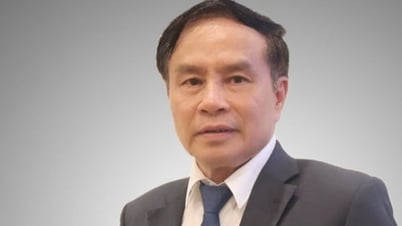Bad debt threatens the stability of the credit system
January 1, 2024 marks the end of the validity of Resolution 42/2017/QH14 on piloting the handling of bad debts of credit institutions; this is a pilot regulation to create conditions for credit institutions to quickly and completely handle outstanding bad debts.
The fact that this document has not been extended or codified into a stable regulation has created a serious legal gap, especially in the handling of collateral, which is the most important legal tool for credit institutions to protect their ability to recover capital.
Resolution 42/2017 has allowed credit institutions to exercise the right to seize collateral under strict conditions and transparent procedures. When this regulation expires without corresponding successor regulations, if credit institutions continue to seize collateral without the consent of the guarantor, they will face significant legal risks.
First of all, credit institutions do not have the right to unilaterally seize assets without a clear legal basis. When Resolution 42/2017 expires, any act of seizing secured assets, even if agreed upon in the contract, may be considered an act of infringement of ownership rights or illegal possession, leading to serious legal consequences, including administrative or criminal liability.
The lack of a mechanism for seizing collateral makes it difficult for credit institutions to quickly handle collateral, thereby prolonging the time for bad debt recovery, affecting liquidity and capital safety. Having to file a lawsuit, wait for the judgment to take effect and enforce the judgment (THA) often takes a long time, not to mention the case of prolonged disputes, assets being degraded or unable to be auctioned due to unclear legal status.
In Report 54/BC-CP in 2022, the Government pointed out: After Resolution 42/2017 expired, "some credit institutions were confused in handling collateral; the procrastination of borrowers tended to increase again due to lack of legal pressure"...
Need to be clearly and strictly legalized
To overcome the current legal gap after Resolution 42/2017 expires, and at the same time create a harmonious balance between the interests of credit institutions and the ownership and legal possession rights of the guarantor, it is necessary to perfect the law in the direction of clearly and strictly legalizing the mechanism for seizing collateral.
 |
Banks are always ready to support capital for organizations and businesses but also face the risk of bad debt. |
First of all, it is necessary to supplement specific provisions in the Law on Credit Institutions on the right to seize secured assets under conditional methods as stipulated in Article 7 of Resolution 42/2017. Accordingly, credit institutions are only allowed to seize secured assets if there is a full written agreement in the security contract, the security measure has been legally registered, the assets are not in dispute or seized, the seizure process fully complies with the steps of publicity, notification to the guarantor as well as relevant agencies. The seizure needs to be under the direct supervision of local authorities to avoid abuse, transparency and ensure social order.
It is necessary to clearly define the responsibilities of the commune-level authorities and the police in coordinating, supporting and supervising the seizure process, especially in maintaining safety, security and order, and handling arising situations. This coordination should not only be at the level of recommendation but should be specified by mandatory legal regulations with clear legal responsibilities.
In addition, it is necessary to establish an interconnected database system on the legal status of secured assets. Credit institutions need to be empowered to look up information related to assets before seizing secured assets, in order to avoid the situation of mistakenly seizing assets that are in dispute, being seized or applying temporary emergency measures (PMEs). This database needs to be operated on a platform connecting the secured transaction registration agency, the Court, the Civil Enforcement Agency and the Land Registration Office to ensure the update, accuracy and quick, effective and authorized access.
In order to facilitate the protection of the legitimate rights of the guarantor and at the same time maintain the legality of the seizure process, it is necessary to establish an effective control and complaint mechanism. In particular, the guarantor should be allowed to submit an urgent complaint when he believes that the seizure of the secured assets violates the procedures or infringes on his legitimate rights. In case of grounds, the competent authority should be able to immediately apply the BPKCTT to temporarily suspend the seizure of the secured assets.
Sharing the same view on the need to improve regulations on the right to seize collateral, Prof. Dr. Vo Xuan Vinh (Director of the Institute of Business Research, Ho Chi Minh City University of Economics ) also said that it is necessary to legalize the right to seize collateral of credit institutions and debt settlement organizations (DMS); along with detailed and transparent regulations on conditions, procedures, and implementation, including notification to the guarantor and related parties. It is necessary to clearly stipulate the cases in which seizure is allowed and measures to protect the rights of the guarantor during the seizure process, without violating the prohibitions of law and social ethics.
Next is to speed up the litigation and enforcement procedures. It is necessary to legalize regulations allowing the application of simplified procedures in resolving disputes related to secured assets in court. At the same time, complete regulations related to the attachment and handling of secured assets in the civil enforcement process, with effective coordination between credit institutions and enforcement agencies.
“We also need to thoroughly resolve the problems related to collateral as evidence and exhibits. Accordingly, legalize the provisions on returning collateral as evidence in criminal cases or exhibits and means of administrative violations to credit institutions for handling, with clear conditions and procedures so as not to affect the process of resolving the case,” said Prof. Dr. Vinh.
Source: https://baophapluat.vn/luat-hoa-mot-so-quy-dinh-trong-nghi-quyet-422017qh14-ve-xu-ly-no-xau-hoan-thien-co-che-thu-giu-tai-san-bao-dam-de-go-kho-cho-ngan-hang-post549276.html


































































![[Photo] National Assembly Chairman Tran Thanh Man receives Chairman of Morocco-Vietnam Friendship Association](https://vphoto.vietnam.vn/thumb/402x226/vietnam/resource/IMAGE/2025/7/26/b5fb486562044db9a5e95efb6dc6a263)



































Comment (0)